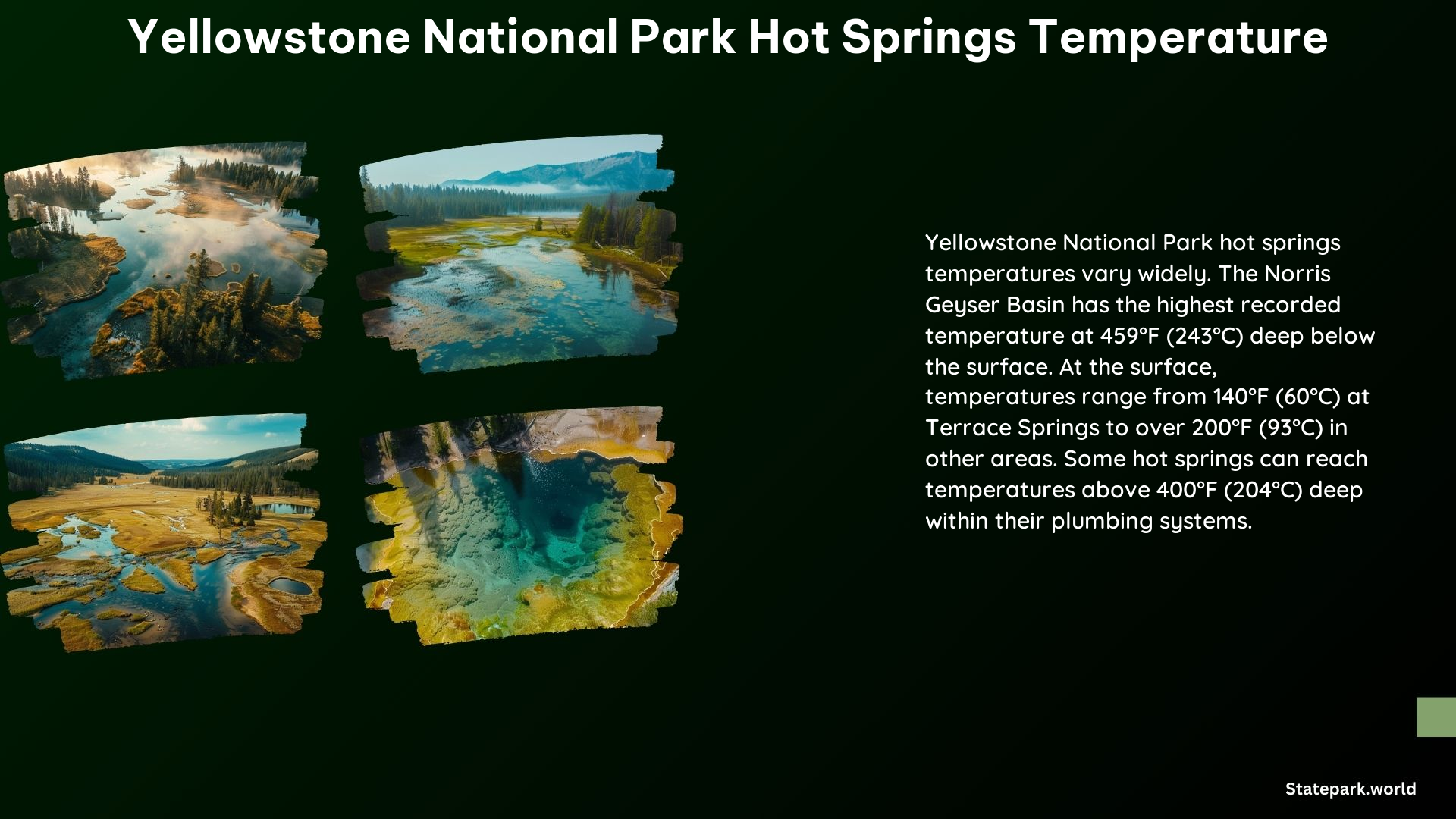Yellowstone National Park is home to an incredible array of hydrothermal features, including hot springs, geysers, and fumaroles. These features are fueled by the park’s unique geothermal system, which is powered by the Yellowstone magmatic system. The temperature of the hot springs in Yellowstone can vary significantly, with some reaching extreme temperatures that can be dangerous for visitors.
Typical Temperature Range
The temperature of hot springs in Yellowstone can range from relatively cool, around 140°F (60°C), to extremely hot, often exceeding 200°F (93°C). The specific temperature of a hot spring depends on factors such as the surrounding pressure and the amounts of gases and salts dissolved in the water.
Extreme Temperatures

Some areas of Yellowstone, like the Norris Geyser Basin, are known for their exceptionally high temperatures. Scientists have measured temperatures as high as 459°F (239°C) in the Norris thermal system, making it the hottest thermal region in the park. Even at the surface, the pools of acidic and super-hot water can house living mats of microorganisms that thrive in these extreme conditions.
Safety Concerns
Visitors to Yellowstone must exercise extreme caution when approaching hot springs and other geothermal features. The water in these features can cause severe or even fatal burns, and the thin, breakable crust around hot springs often conceals scalding water underneath. More than 20 people have died from burns suffered after entering or falling into one of Yellowstone’s hot springs. It is essential to follow safety guidelines, such as staying on designated trails and boardwalks, not touching thermal features or runoff, and never swimming, soaking, or wading in thermal features.
Microorganisms and Colors
The vibrant colors found in Yellowstone’s hydrothermal basins are the result of thermophiles, microorganisms that thrive in hot temperatures. Different types of thermophiles live at specific temperatures within a hot spring and cannot tolerate much cooler or warmer conditions. These microorganisms are also known as extremophiles because they inhabit environments that are extreme to human life.
Geothermal Activity
The geothermal activity in Yellowstone is extensive and has been present for several thousand years. It is fueled by the Yellowstone magmatic system, which heats the water that rises to the surface through a process of convection currents. This activity is responsible for the formation of the park’s unique hydrothermal features, including hot springs, geysers, and fumaroles.
Preservation and Protection
To preserve these unique and fragile features, soaking in the hot springs is prohibited. The park’s geothermal features are protected to ensure their continued existence for future generations.
Key Statistics
- Over 10,000 hydrothermal features are found in Yellowstone National Park.
- More than 500 of these features are geysers.
- The park’s geothermal activity has been present for several thousand years.
- The highest recorded temperature in the park is 459°F (239°C) in the Norris thermal system.
- More than 20 people have died from burns suffered after entering or falling into one of Yellowstone’s hot springs.
Yellowstone National Park’s hot springs are a testament to the incredible power of the Earth’s geothermal activity. While these features can be awe-inspiring, it is crucial for visitors to exercise caution and follow safety guidelines to protect both themselves and the delicate ecosystem of the park.
References
- National Park Service. (2024). Hydrothermal Features – Yellowstone National Park. Retrieved from https://www.nps.gov/yell/learn/nature/hydrothermal-features.htm
- United States Geological Survey. (2022). How hot are Yellowstone’s boiling waters? Some are hotter than others. Retrieved from https://www.usgs.gov/observatories/yvo/news/how-hot-are-yellowstones-boiling-waters-some-are-hotter-others
- National Park Service. (n.d.). Heat – Old Faithful Virtual Visitor Center. Retrieved from https://www.nps.gov/features/yell/ofvec/exhibits/eruption/heat/ofheat.htm
- Yellowstone Forever. (2023). Safety and Hot Springs. Retrieved from https://www.yellowstone.org/safety-and-hot-springs/
- Chicago Tribune. (2016). Man who dissolved in Yellowstone hot spring slipped while checking temperature to take bath. Retrieved from https://www.chicagotribune.com/2016/11/17/man-who-dissolved-in-yellowstone-hot-spring-slipped-while-checking-temperature-to-take-bath/.
